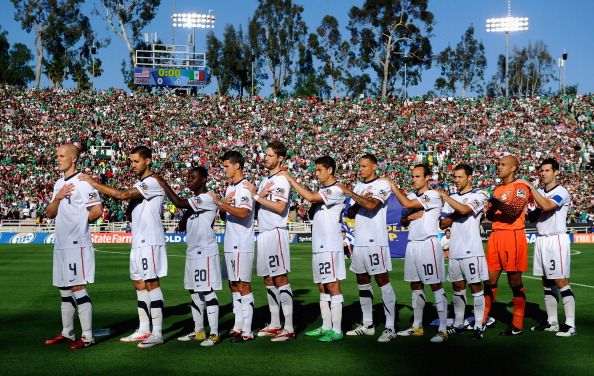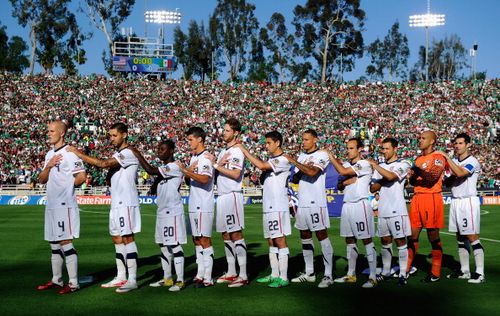
Analyzing USA's three Summer friendlies

The Yanks wowed with a dominant display vs Scotland and then struggled in subsequent matches vs Brazil and Canada. We compare and contrast the three performances based on four important factors.
Playing from the Back
The most promising difference between the regimes of Jurgen Klinsmann and Bob Bradley has been the insistence on keeping the ball on the floor. This philosophy was on display in a beautiful manner against Scotland. It must be noted that the Scots dropped deep and applied little pressure to the Yanks back four which made it easy for the defense to find Michael Bradley, Maurice Edu and Jermaine Jones to advance the ball up the pitch. This ball retention philosophy allowed the US to dominate the run of play and also pin Scotland back and make them unable to counter attack because they could only recover the ball deep inside their half.
However, the Brazil match was a different story. The Samba Boys applied higher pressure to the US back four and the American defense was rushed and uncomfortable. This resulted in long balls into Herculez Gomez through the center or out wide to Donovan or Torres. These low percentage punts upfield allowed Brazil to easily win the ball back.
In the first half against Canada, the US followed a similar course. With Canada dropping all eleven players to midfield or deeper, the Yanks became frustrated. As a result, they sent long balls towards the front three which played into the Canadian’s strategy. As the game went on, Clint Dempsey became more frustrated and started to drop deeper to look for the ball which was good and bad. The good is that it gave the US a central numbers advantage and helped them move the ball towards goal. The bad was that Dempsey was often too far from goal to create chances in the final third. If the Klinsmann stylistic revolution is going to have a lasting impact, the US will have to play a more patient game in defense to try and break down opponents via player and ball movement like we saw against Scotland.
Midfield Shape & Setup
In the three matches, we saw three different midfield setups and two different formations. This experimentation is what friendlies are for. However, only one of the setups was effective. Against Scotland, the Yanks played Edu as the holding midfielder with Jones and Bradley as box to box players. This setup allowed Jones and Bradley to spring forward using their pace and support the front three.
Also, this shape allowed Michael Bradley to shine. Since moving to Chievo, he has developed from a player who relied on athleticism and effort to a player who still possess those attributes but also has tactical awareness and creative skill to craft scoring chances. For example, he slipped in Donovan for a second half goal against Scotland.
However, Bradley and Edu swapped roles against Brazil. @BrianStraus of the Sporting News explained the move on twitter, “JK said MB deep v Brazil b/c of pressure, needed someone who could make good passes to feet. Canada yielding MF, so why not push MB higher?”
Logically, playing Bradley deeper in the Brazil match made sense but the move neutralized the best attributes of Edu and Bradley. Edu’s best position is the holding role because he is not great as a distributor or a creator. He excels on stopping attacks through the middle which protects the back four. Bradley could have provided more of an attacking spark playing closer to goal. Also, Bradley at times struggles in his tactical positioning as seen in the goal by Marcelo. Brazil attacked from the middle to the left and Marcelo’s run into the box was not tracked by Bradley resulting in an easy goal.
Against Canada, the US went with a 4-4-1-1 or a 4-4-2 look. Jones and Bradley partnered without a designated holding player. Often times they were fulfilling the same duties which made their roles redundant. They frequently dropped deep in tandem to collect the ball from defense which left a gap in the center.